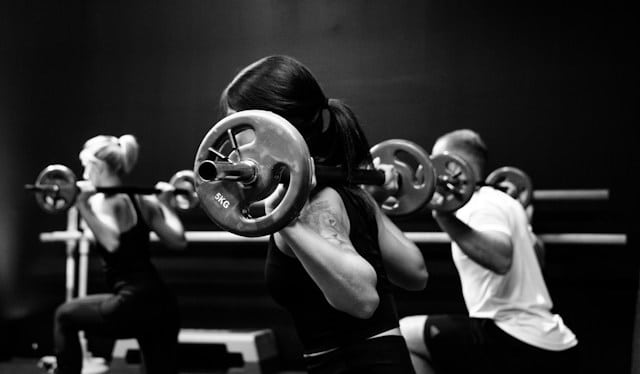How are alternative and holistic practices used in sports therapy?

Sport therapy is a dynamic field that is continually evolving with the times. Traditional physical therapies that are well-known in the world of sports medicine still have their place. However, an integrative approach that incorporates both traditional and alternative treatment methods is becoming increasingly popular. The shift towards a more holistic approach to health care is evident, with therapies such as acupuncture, yoga, and other complementary practices gaining traction. The sports world is no exception to this trend.
Complementary and Alternative Therapies: An Overview
Before diving into specifics regarding how these practices are applied in sports therapy, it might be helpful to understand what complementary and alternative therapies entail. These are a group of diverse medical and health care systems, practices, and products that aren’t considered part of conventional medicine.
Also to read : Diving deep: the world of professional underwater sports
While ‘complementary’ refers to therapies used in conjunction with conventional medicine, ‘alternative’ therapy is used in place of standard care. Examples of these therapies include acupuncture, massage therapy, herbal medicine, and yoga. The main idea behind these treatments is a holistic approach – treating the whole body rather than just the symptoms of a particular ailment. They aim to bring about a balance in the body’s systems, promoting overall well-being and health.
The Role of Acupuncture in Sports Therapy
Acupuncture is a practice that dates back thousands of years and is a significant part of traditional Chinese medicine. It involves inserting very thin needles into specific points on the body. The idea is that this can help balance energy flow, reduce pain, and promote healing.
Also read : What Are the Psychological Strategies for Coping with Setbacks in Competitive Sports?
In sports therapy, acupuncture is often used as a complementary treatment alongside conventional methods. It can help athletes dealing with chronic pain and acute injuries. One of the main benefits is the potential for pain relief without the need for medications which may have side effects or lead to dependency. Many athletes also report feeling more relaxed and stress-free following acupuncture sessions, which can be beneficial for their overall performance and recovery.
Yoga and Mind-Body Practices in Sports Therapy
Yoga and similar mind-body practices offer a unique blend of physical and mental benefits that can be particularly valuable for athletes. Yoga poses help improve flexibility, build strength, and increase balance – all vital components for sports performance.
But perhaps even more importantly, the mindfulness element of yoga can be a powerful tool for athletes. Sports are not just physically demanding but can also be incredibly stressful and mentally challenging. Incorporating yoga and mindfulness practices into their routine can help athletes stay mentally focused, reduce anxiety, and handle the pressure of competition more effectively.
Herbal Medicine and Supplement Use in Sports Therapy
Herbal medicine and other natural supplements are becoming increasingly popular in sports therapy as well. Used in conjunction with a healthy diet and regular exercise, these natural remedies can offer numerous benefits.
They can help athletes recover faster, boost their immune system, improve energy levels, and enhance performance. It’s essential, however, for athletes to consult with a knowledgeable professional before starting any new supplement regimen. Some substances might have side effects or interact negatively with other medications.
The Importance of an Integrative Approach in Sports Therapy
The use of these alternative and holistic practices in sports therapy reflects a broader shift towards an integrative approach in health care. This approach emphasizes the importance of viewing the patient as a whole and considering all aspects of their well-being.
In the context of sports therapy, this means not just addressing physical injuries or ailments but also considering the mental and emotional aspects of an athlete’s health. Therapies like acupuncture, yoga, and herbal medicine can play a significant role in this regard. By combining these practices with conventional treatments, therapists can provide a more comprehensive, personalized care plan that caters to the athlete’s unique needs.
While the world of sports therapy continues to evolve, it’s clear that the future lies in an integrative, holistic approach that takes into account the totality of an athlete’s health. With the right combination of traditional, alternative, and complementary therapies, athletes can achieve optimal performance and overall well-being. The key is to find a balance that suits each individual’s needs, preferences, and goals. It’s a fascinating time to be involved in sports therapy, and it will be interesting to see how these practices continue to shape the field in the years to come.
The Role of Tai Chi and Movement Therapies in Sports Therapy
Tai chi, traditionally an ancient Chinese martial art, has gained recognition in recent years as a form of movement therapy. This slower, meditative style of movement is believed to promote balance, both physically and mentally, and is rich in benefits for athletes.
The practice of tai chi involves performing a series of movements in a slow, focused manner, accompanied by deep breathing. This mind-body approach not only improves physical strength and flexibility but also helps in reducing stress and improving mental clarity. For athletes, this can translate into improved performance on the field and faster recovery off it.
Tai chi, as a low-impact form of exercise, is particularly beneficial for injury prevention and rehabilitation in athletes. It promotes balance and flexibility, reducing the risk of falls and injuries typically associated with high-impact sports. Moreover, the mindful component of tai chi can help athletes develop mental resilience, crucial for coping with the ups and downs of competitive sports.
Like other complementary health practices, tai chi is usually incorporated into a broader, integrative health plan. This can include conventional physical therapy, other alternative therapies, and even dietary modifications. A systematic review of studies would reveal various benefits of this holistic approach, from reduced pain and faster recovery times to improved mental health and overall wellness.
The Future of Sports Therapy: Towards an Evidence-Based Integrative Approach
As we move towards the future, sports therapy is set to become more integrative, embracing both traditional and alternative therapies. One of the key drivers of this change is an increasing body of evidence supporting the effectiveness of alternative therapies. This growing evidence base is making it easier for health care professionals to recommend these therapies and for athletes to accept them as part of their treatment plan.
Complementary alternative medicine, like acupuncture, yoga, tai chi, and herbal supplements, along with conventional treatment methods, allows for a more personalized and comprehensive approach to therapy. This integrative medicine approach addresses not just the physical symptoms but also the mental health of the athlete, offering a more holistic health solution.
In addition to this, the focus is also shifting towards preventive health care. Instead of just treating injuries when they occur, there’s an increasing emphasis on preventing them in the first place. This includes educating athletes about their bodies, promoting healthy lifestyles, and using therapies like yoga and tai chi to improve balance, flexibility, and strength.
The future of sports therapy is exciting, with the potential to revolutionize how we think about athlete health and wellness. As more studies are conducted, and as we continue to explore the benefits of an integrative approach, the fusion of alternative and conventional treatments will undoubtedly become more prevalent. And with athletes at the center of this evolution, their health, performance, and overall wellbeing stand to benefit the most.
In conclusion, the adoption of an integrative, holistic approach is transforming sports therapy. The combination of traditional therapies with alternative medicine promotes a more personalized and comprehensive treatment, addressing both physical and mental health. As we move forward, this fusion of therapies is set to become the norm, offering athletes the best of both worlds: evidence-based, effective treatments that improve health, wellness, and performance. This evolution underlines the importance of continuous research and open-mindedness in the field of sports therapy.
